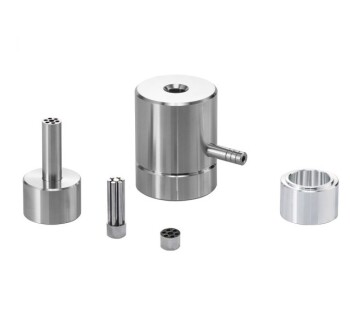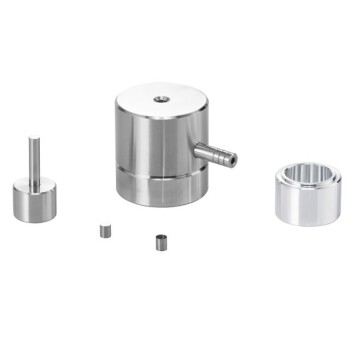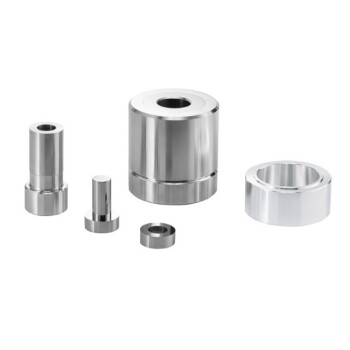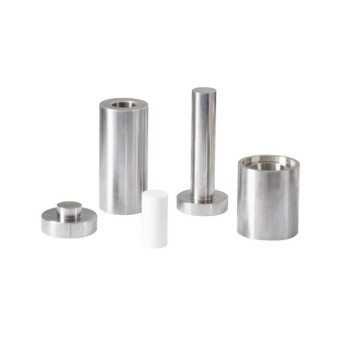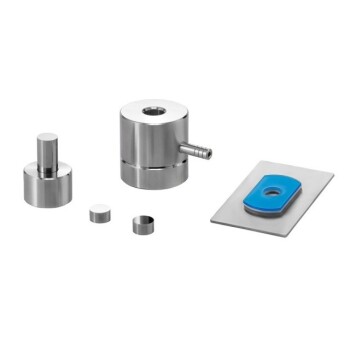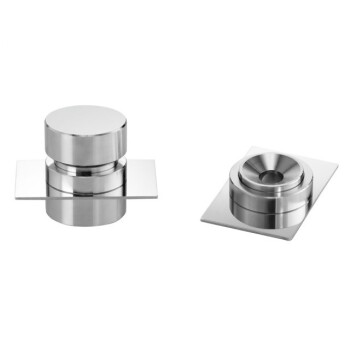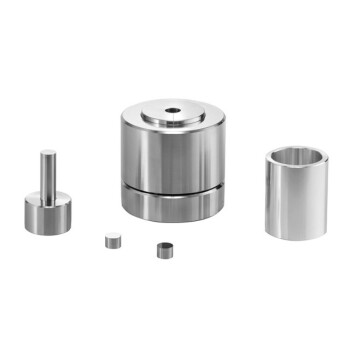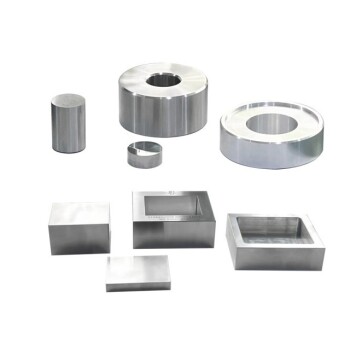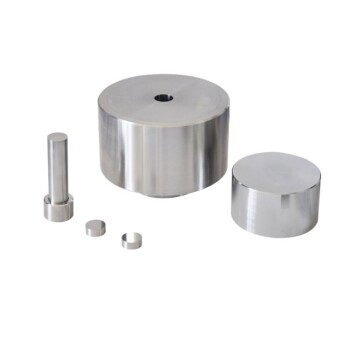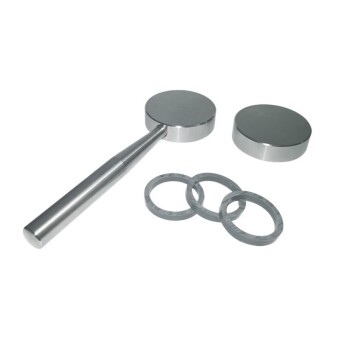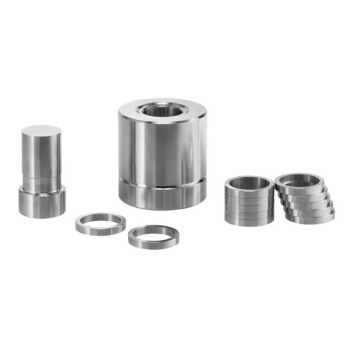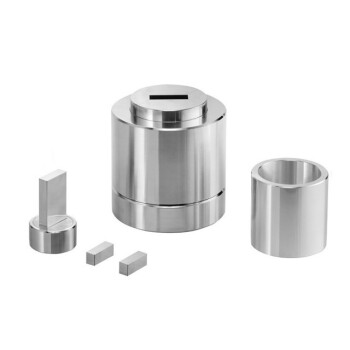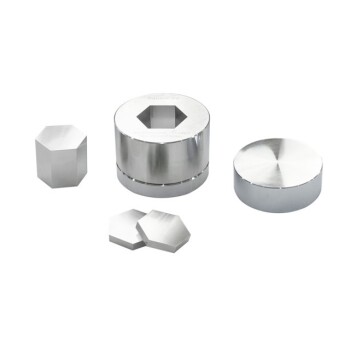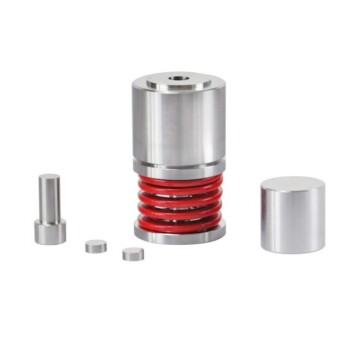To prepare KBr pellets for FTIR analysis, the essential equipment includes a pestle and mortar, a pellet die set, and a hydraulic press. An agate pestle and mortar is preferred to minimize contamination and ensure fine grinding of the sample. The press applies the necessary force to form a thin, transparent disc suitable for spectroscopic analysis.
The key to a successful KBr pellet is not the equipment itself, but the meticulous technique used. Your goal is to create a perfectly transparent, glass-like disc, which requires eliminating moisture and applying consistent pressure.
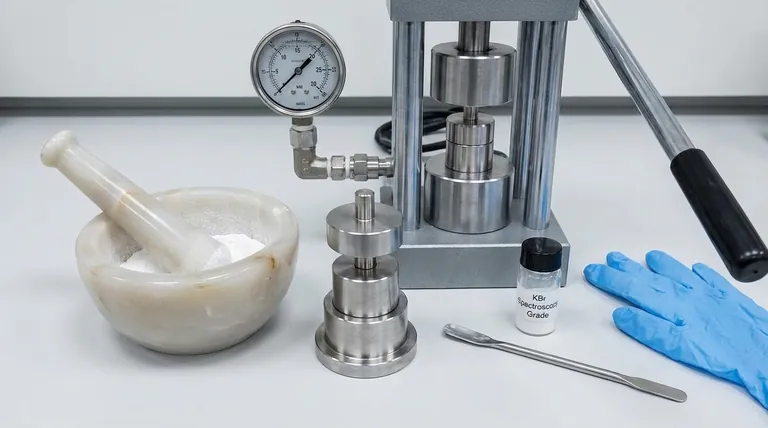
The Core Equipment for Pellet Preparation
Each piece of equipment serves a distinct and critical function in the process. Understanding the role of each tool is the first step toward producing a high-quality pellet that will yield a clean spectrum.
H3: Pestle and Mortar
The primary purpose of the pestle and mortar is to grind your solid sample into an exceptionally fine powder.
An agate set is highly recommended. Its hard, non-porous surface prevents material from the mortar itself from contaminating your sample and ensures a smooth, uniform particle size.
H3: Pellet Die Set
This is the mold that shapes your sample mixture into a pellet. It consists of a body, a base, and two polished steel anvils (or bolts).
Die sets come in various diameters, such as 7 mm or 13 mm. It is critical that the anvils and interior surfaces are kept impeccably clean and dry to prevent contamination and ensure the pellet does not stick.
H3: Hydraulic Press
A press is required to apply the immense, even force needed to fuse the KBr-sample mixture into a solid, transparent disc. A load of around 10 tonnes is typical for a 13 mm die.
A portable hydraulic press is a common and user-friendly choice. Models with an integrated pressure gauge are superior, as they allow for precise, repeatable control over the applied force.
Why Technique Matters More Than the Tools
Simply having the equipment is not enough. The KBr pellet method is highly sensitive to procedural errors, especially those related to moisture and sample concentration.
H3: The Goal: Optical Transparency
The entire purpose of this procedure is to create a pellet that is transparent to infrared light. KBr is used because its crystal structure does not absorb IR radiation in the typical analysis range.
Any cloudiness, fractures, or opacity in the final pellet will scatter the instrument's IR beam, leading to a noisy, distorted, and unreliable spectrum.
H3: The Enemy: Moisture
Potassium Bromide (KBr) is highly hygroscopic, meaning it readily absorbs moisture from the atmosphere. Water has very strong absorption bands in the infrared spectrum.
If your KBr or equipment is not perfectly dry, these water bands will appear in your final spectrum, potentially obscuring the peaks from your actual sample. This is the most common reason for poor results.
H3: The Process: Proper Mixing
Proper sample preparation is non-negotiable. First, grind a tiny amount of your sample by itself until it is a fine, fluffy powder.
Then, add the spectroscopy-grade KBr powder and gently mix it with the sample. Do not grind the KBr, as this can damage its crystal lattice. The goal is a uniform dispersion of sample particles within the KBr matrix.
Common Pitfalls to Avoid
Troubleshooting is a normal part of the process. Understanding these common failures will help you quickly identify and solve problems.
H3: Pitfall: A Cloudy or Opaque Pellet
This is the most frequent issue. It is almost always caused by moisture contamination. To fix this, gently heat your die set and anvils in an oven before use and work with freshly dried KBr powder.
Other causes include using too much sample relative to the KBr or not applying enough pressure. A good pellet should contain less than 1% sample by mass.
H3: Pitfall: Pellet Cracking or Breaking
A pellet that fractures upon removal from the die is often the result of releasing the pressure from the hydraulic press too quickly. Trapped air needs time to escape.
Always release the pressure slowly and evenly. Cracking can also be caused by uneven distribution of the powder in the die before pressing.
H3: Pitfall: Contaminated Spectrum
Unexplained peaks in your spectrum point to contamination. This can come from a dirty pestle and mortar, a poorly cleaned die set, or using a low-purity grade of KBr. Always use spectroscopy-grade reagents and clean your equipment meticulously between samples.
A Checklist for a Perfect Pellet
Use these guidelines to tailor your technique to your analytical goals.
- If your primary focus is obtaining a clean spectrum: Prioritize using high-purity, dry KBr and meticulously cleaning and drying all equipment before use.
- If your primary focus is consistency and reproducibility: Use a hydraulic press with an integrated pressure gauge to apply the exact same force every time.
- If you are troubleshooting a cloudy pellet: The most likely culprit is moisture; reheat your die set in an oven and use freshly opened or dried KBr powder.
Mastering this technique is a foundational lab skill that transforms a simple powder sample into a source of high-quality analytical data.
Summary Table:
| Equipment | Purpose | Key Considerations |
|---|---|---|
| Pestle and Mortar | Grind sample into fine powder | Use agate to minimize contamination |
| Pellet Die Set | Mold mixture into pellet | Keep clean and dry; choose diameter (e.g., 7mm, 13mm) |
| Hydraulic Press | Apply force to form transparent disc | Use portable press with gauge for precise pressure (e.g., 10 tonnes) |
Need reliable equipment for KBr FTIR pellets? KINTEK specializes in lab press machines, including automatic lab presses, isostatic presses, and heated lab presses, designed to deliver consistent pressure and high-quality results for your laboratory needs. Achieve perfect transparency and accurate spectra with our durable tools. Contact us today to discuss how we can enhance your sample preparation process!
Visual Guide
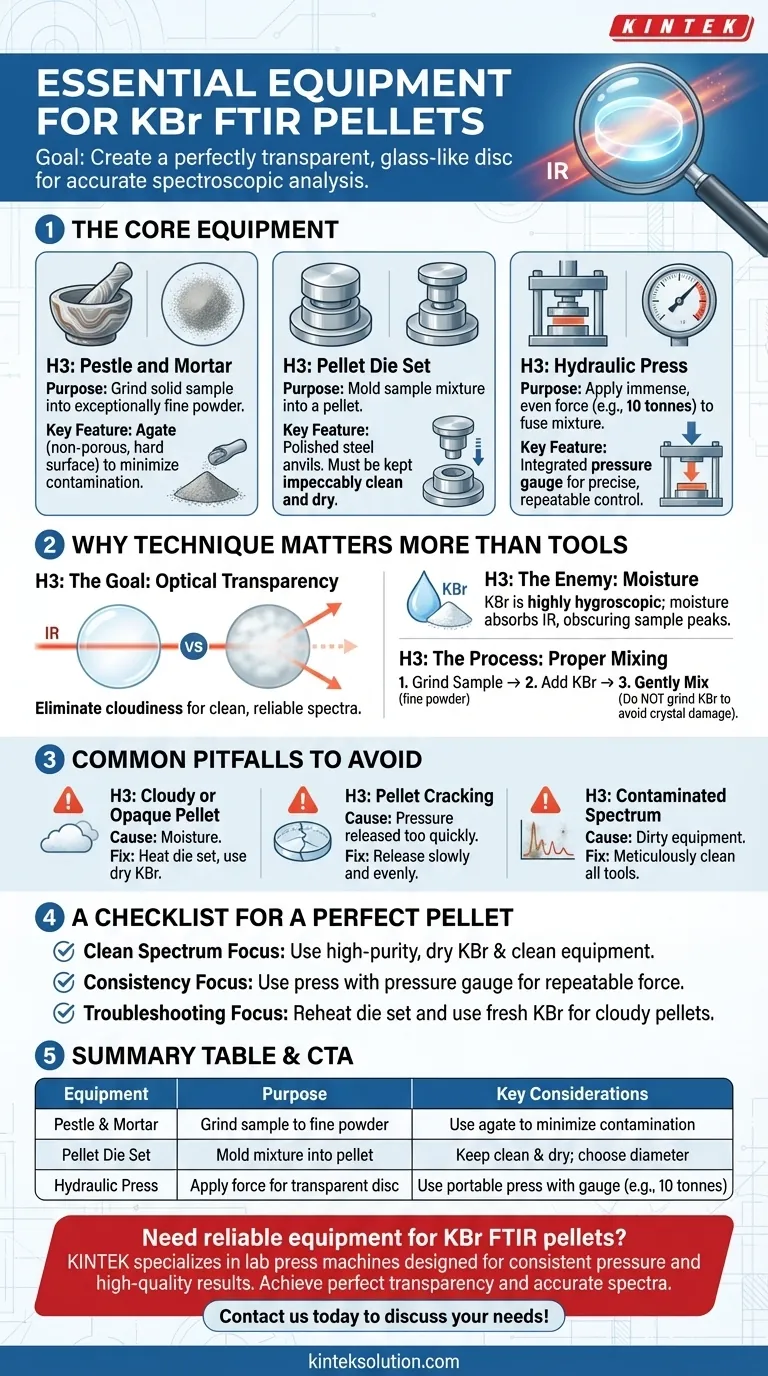
Related Products
- Special Shape Lab Press Mold for Laboratory Applications
- Laboratory Hydraulic Press 2T Lab Pellet Press for KBR FTIR
- Lab Cylindrical Press Mold for Laboratory Use
- Lab Ring Press Mold for Sample Preparation
- Lab Cylindrical Press Mold with Scale
People Also Ask
- What is the function of a carbon steel dry pressing die? Achieve High-Density, Uniform BZY20 Ceramic Compacts
- What are the roles of the nylon die and steel rods in pressing electrolyte pellets? Achieve Optimal Pellet Density for Ionic Conductivity
- What is the function of a PEEK die when pressing Na3PS4? Achieve Contamination-Free, In-Situ Testing for Sulfide Electrolytes
- What is the function of a lab press and die in the initial preparation of LLZO solid-state electrolyte pellets? The Foundation for High-Performance Solid-State Batteries
- Why must a lab press die's side wall be non-conductive for resistivity testing? To Ensure Accurate Current Path Isolation
